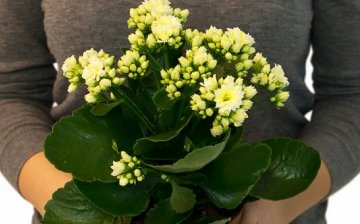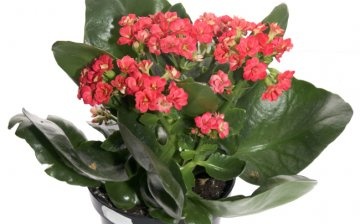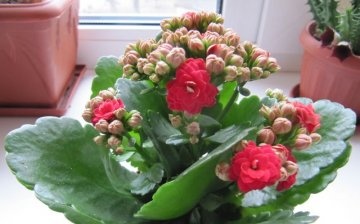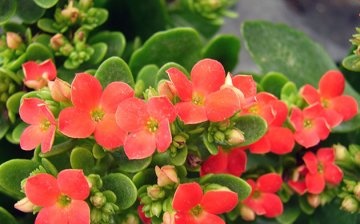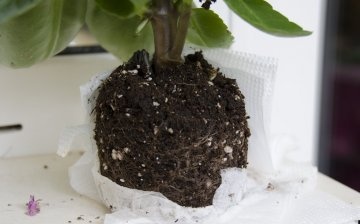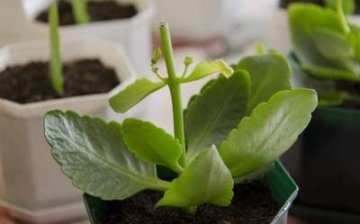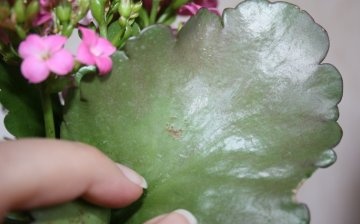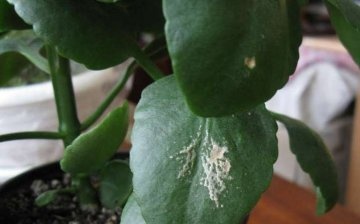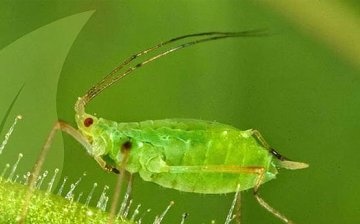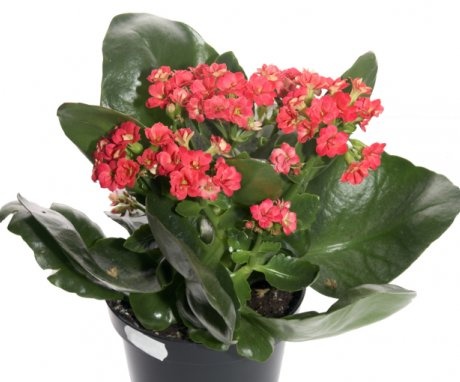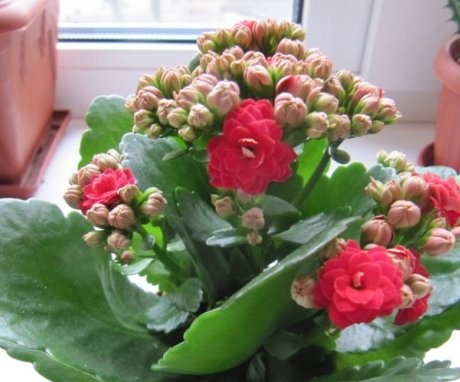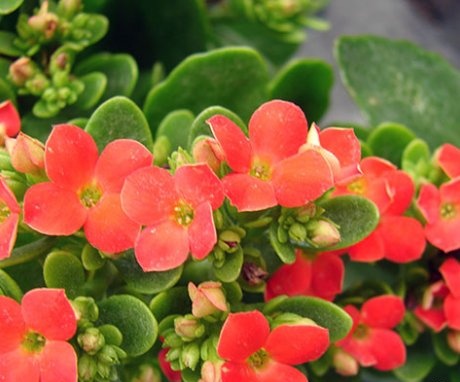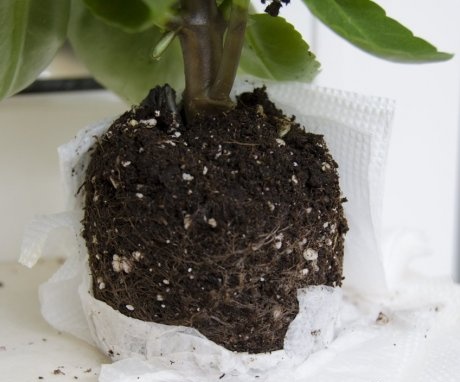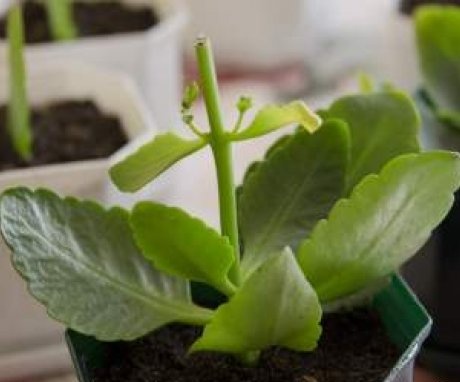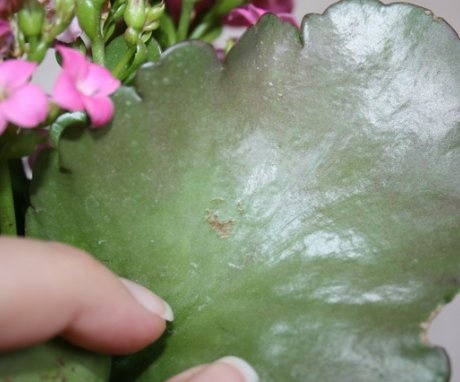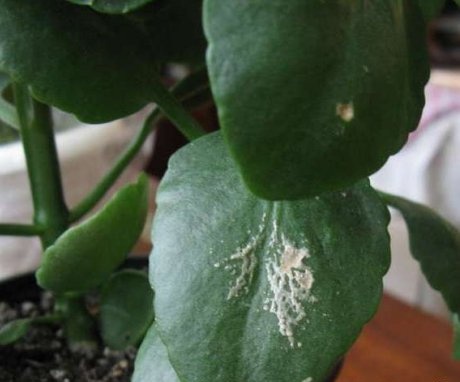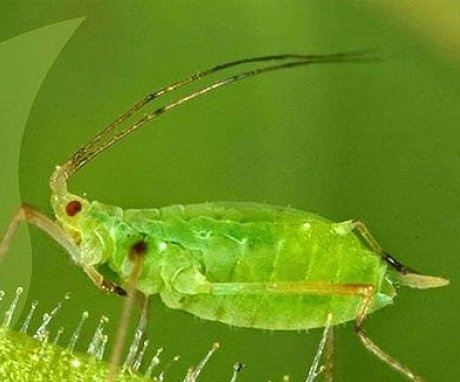Kalanchoe: how to properly care for a flower
Kalanchoe is a very valuable plant, as it combines both decorative and medicinal components. Kalanchoe comes from Madagascar, but, despite the exoticism, feels great at home in our climate.
With proper care, the Kalanchoe will surely delight you with a beautiful flowering. The buds usually have a pink tint and perfectly decorate the interior of the room. Kalanchoe was nicknamed "indoor analogue of ginseng", as it is difficult to list all the healing properties of this plant. After all, it has a healing effect, is actively used in cosmetology and even improves the energy background of the apartment.
Content:
- How to choose the right plant when buying
- Growing conditions
- Watering and feeding
- How to make a transplant correctly
- How to properly trim
- Problems due to improper care
- The main diseases of the Kalanchoe
- Kalanchoe pests
How to choose the right plant when buying
Before buying, you need to pay attention to the appearance of the Kalanchoe, because it depends on how strong and beautiful the plant can be grown in the future. In order to choose a healthy plant, you need to pay attention to the following nuances:
- The stem of the Kalanchoe should be even, without dry leaves and damage.
- It is best to buy a plant during the flowering period, the number of buds will show how healthy the Kalanchoe is.
- Considering this point, the best time to buy a plant is in winter, because Kalanchoe blooms in winter, and in summer they are at rest.
- The foliage should not be stained.
Growing conditions
That the plant was healthy and beautiful, it needs the right lighting, temperature, humidity and soil composition:
- Kalanchoe cannot be called a whimsical plant. You can place the plant in almost any place convenient for this. It is not afraid of direct sunlight, but it is best to choose a place for the Kalanchoe where the light will be slightly diffused. Periodically, it is useful to take it out into the sun in the afternoon. Too aggressive sunlight leaves burns on the leaves, and the plant begins to stagnate. With the right lighting the foliage of the Kalanchoe will be framed with a brown border. If there is not enough light, then the plant usually stretches, and the color of the leaves becomes dull.
- Air Temperature and Humidity The most suitable temperature is between 23 and 28 degrees. Kalanchoe will withstand hotter temperatures, but this implies frequent watering plants, otherwise, the Kalanchoe may dry out. If we talk about low temperatures, then the critical point is temperatures below ten degrees, at which the plant can freeze and die. It is important to protect the Kalanchoe from the frosty wind, since the foliage of the plant is prone to frostbite. Kalanchoe does not require spraying, on the contrary, excessive moisture can be harmful to it. Therefore, it is enough to wipe the foliage with a damp cloth.
- Priming. Kalanchoe belongs to the succulent family, so you can safely take a ready-made soil mixture in the store.However, if we consider the composition of the soil in more detail, then it consists of peat with the addition of coconut fiber. The structure of the soil is loose, it should not retain water and impede the flow of oxygen to root system plants. If you make the substrate yourself, you can take different fractions of humus, turf and coarse sand. It is important to disinfect the soil before planting the plant, in order to avoid various infections of the Kalanchoe.
Watering and feeding
Since Kalanchoe is a succulent, over-watering can cause enormous damage to the plant. Watering should be done as follows: completely shed the soil and drain the remainder through the holes in the pot to prevent water stagnation. In winter, a couple of waterings per week will be enough for the plant; in extreme heat, the frequency should be increased.
Excessive watering of the plant can be identified by the following signs:
- Dull foliage.
- The appearance of dark spots with a yellow border.
- The soil remains moist and does not dry out.
How can a plant be saved:
- It is necessary to get the plant out of the planting container and check the root system. If it is not damaged by decay, then the Kalanchoe can not be transplanted.
- Blot the roots of the plant with a napkin.
- Place the Kalanchoe in a warm and dry place (but not near heaters).
- After the plant is dry, it can be returned to the planting container, renewing the drainage if it is not good enough.
In case of damage to the root system, all rotten areas must be cut off and the cut sites must be treated with an antiseptic solution, or ash... Next, the plant must be dried and you can start transplanting. Kalanchoe does not require frequent feeding, it is enough to choose a fertilizer composition in the store, which is intended for succulents, and use it according to the instructions. You should not feed Kalanchoe in winter, it can harm the plant.
How to make a transplant correctly
Basic rules for transplanting Kalanchoe:
- Kalanchoe grows quite intensively, therefore, it may require an annual transplant.
- Each time, the planting capacity is increased by at least three centimeters in volume.
- It is not worth replanting the plant during the period flowering, since there is a risk that the buds will fall off and adaptation will be extremely difficult.
- Having previously well moistened the soil, the plant is taken out of the planting container along with lumps of old soil, and then thoroughly shaken off.
- Before transplanting, always examine the root system for decay and remove the affected areas.
- The new pot is thoroughly washed with hot water and rinsed with a solution of potassium permanganate.
- Next, a drainage layer (from 2 cm thick) is laid out on the bottom of the planting container and sprinkled with prepared and disinfected soil to half the pot.
- The plant is placed vertically and sprinkled with the remaining soil, subsequently tamping.
- You can add top dressing to the soil for better plant adaptation.
- Kalanchoe is spilled with water, waiting for excess moisture to drain from the holes of the planting container.
How to properly trim
Pruning - a very useful procedure for Kalanchoe. Thanks to timely pruning, the crown becomes richer and a lot of new shoots appear. Kalanchoe pruning is carried out after flowering. Dried inflorescences are cut to the very base, after which the Kalanchoe gives new shoots.
In addition, you can pinch the Kalanchoe, this manipulation will allow you to form the crown and give it a neat look.
How to properly prune in order for the Kalanchoe to bloom again:
- First, the plant must be placed in partial shade, the light must reach the plant no more than six hours a day.
- After that, it is necessary to prune the dried inflorescences, new buds should no longer form.
- Watering is reduced to 1 time in two weeks.
- The plant is kept in a cool place, the temperature should not be more than 20 degrees.
- Before the winter period, care is returned to its usual mode.
After these simple procedures, the Kalanchoe begins to bloom soon.
Problems due to improper care
The consequences of improper care can negatively affect the Kalanchoe, therefore it is very important to maintain a comfortable habitat and monitor the condition of the plant.
There are several main points that the owners of this plant may encounter:
- If the Kalanchoe becomes elongated, while the lower leaves dry out, then it does not have enough sunlight.
- If the Kalanchoe sheds foliage, then this may be the reason for the rare ventilation of the room.
- Spots on the foliage of the Kalanchoe can appear with sunburn, or excessive crowding of plants.
- If the Kalanchoe stops growing and sheds foliage, then this may indicate a lack of nutrients in the soil.
- The curled leaves of the plant may indicate too much peat in the soil.
- If the foliage of the Kalanchoe becomes soft and falls off, then this is due to too frequent watering, or rotting of the root system.
- If the foliage of the plant dries up, then, most likely, the frequency of watering should be increased.
The main diseases of the Kalanchoe
The most common diseases that can be encountered while growing Kalanchoe:
- The defeat of gray mold occurs due to an excess of moisture and the wrong regime lighting... The foliage is covered with spots and gray bloom. The disease is very actively spreading to nearby plants. Treatment takes place by treating the plant fungicide.
- Powdery mildew manifested by the formation of a whitish bloom and foliage fall. The disease occurs due to excessively dry air or heat. Treatment is done by treating the plant with a fungicide.
- Rot appears as black and damp spots on the plant. It usually occurs due to high humidity and is treated with an insecticide. But if the Kalanchoe treatment does not help, then the plant should be disposed of.
- Ring spot, which appears in characteristic circles on the foliage of the plant. The leaves become rough and out of shape. Such a disease cannot be cured, therefore it is necessary to dispose of the plant as soon as possible.
Kalanchoe pests
The main pests of Kalanchoe that can be encountered:
- The mite is multi-clawed. Its presence is manifested by brown crusts on the Kalanchoe foliage, which stops growing and begins to curl inward. A tick is a white or transparent insect that lives directly on the plant. To combat the pest, washing with soapy water and subsequent treatment with an insecticide is used.
- Aphid... When aphids are affected, the foliage becomes yellow and deformed with a sticky bloom. Fight aphids with soapy water and a suitable insecticide. Aphids very actively spread to neighboring plants, so it is necessary to carefully monitor the state of the Kalanchoe.
- Mealybug. The veins of Kalanchoe leaves are covered with a whitish bloom. To combat the worm, it is necessary to remove all affected leaves, and then treat the plant with an insecticide.
- Shield. The foliage of the Kalanchoe dries and falls off, the stem becomes covered with a sticky bloom, the plant stops growing. Pest control is carried out by manually collecting pests and flushing the plant. The thick carapace of the scabbard protects it from most chemicals, so wiping the foliage with a swab moistened with alcohol is good. However, you should be careful not to burn the plant.
Kalanchoe is a rather unpretentious plant. If you know the main points of proper care and maintain a comfortable environment for its living, then the Kalanchoe will become a real decoration of the house and will delight the owner with a beautiful flowering.
More information can be found in the video:



